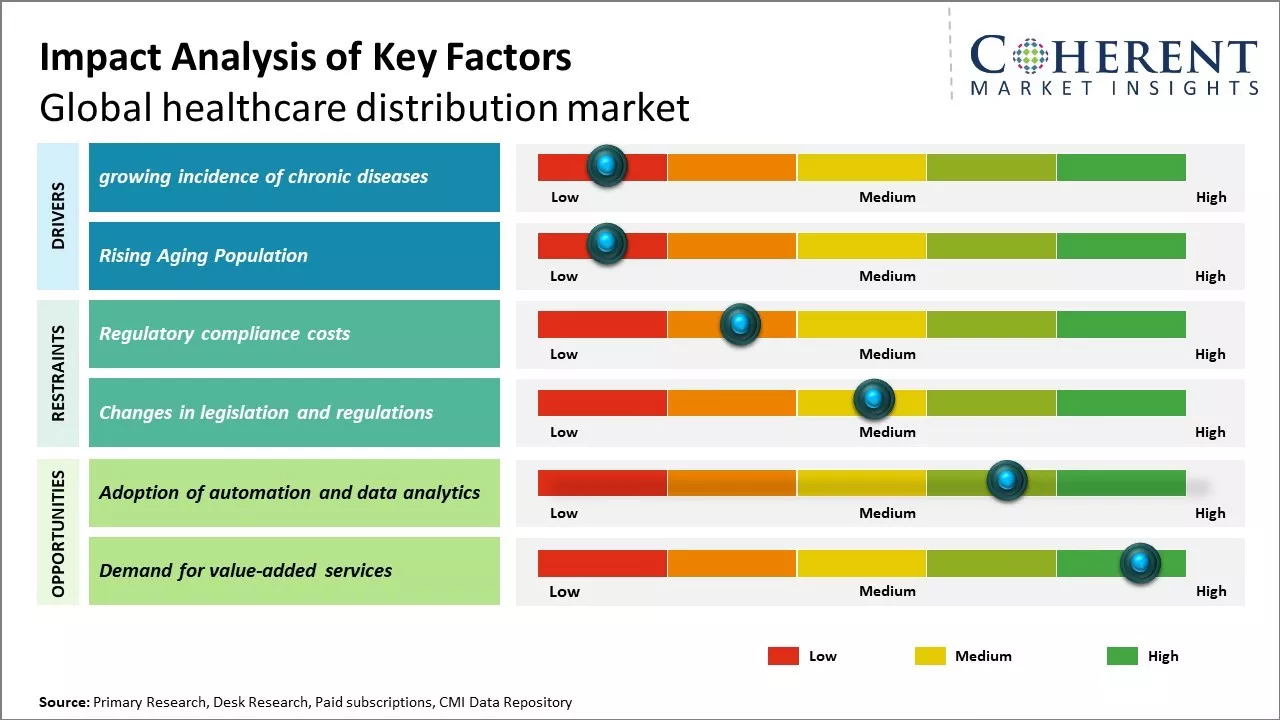Global healthcare distribution market is estimated to be valued at USD 1,120.67 Bn in 2025 and is expected to reach USD 1,765.68 Bn by 2032, exhibiting a compound annual growth rate (CAGR) of 6.7% from 2025 to 2032.

To learn more about this report, Request sample copy
Rising healthcare costs, increasing chronic diseases, growing prevalence of lifestyle diseases, booming online distribution channels, and expanding medical infrastructure can boost demand for pharmaceutical and medical devices distribution services globally. Countries are spending more on healthcare to provide universal coverage to their citizens, thus, increasing the volume of healthcare products requiring efficient distribution. Key players are investing in innovative technologies such as blockchain, IoT, and analytics to improve supply chain visibility and deliver products safely and quickly. This helps them to expand their customer base and gain market share.
Growing incidence of chronic diseases
Rising prevalence of chronic diseases across the globe can drive the healthcare distribution market growth. As per the World Health Organization, chronic diseases are the leading cause of death and disability worldwide, accounting for over 70% of all deaths annually. Chronic conditions like cardiovascular diseases, cancer, respiratory diseases and diabetes require long term medical treatment and management over a period of time. This has boosted demand for various pharmaceutical drugs, medical devices, diagnostic equipment and other supplies that are needed to effectively treat such chronic illnesses. As more number of people will suffer from long term health issues, there will be need for ensuring regular and reliable supply of these medical commodities to hospitals, pharmacies, home healthcare providers and other points of care locations. This propels healthcare supply chain companies and medical product distributors to expand their infrastructure and streamline distribution networks. For instance, according to Diabetes Atlas.org in 2021, approximately 536.6 million people had diabetes, with projections indicating this figure will increase to 642.7 million by 2030. Rising prevalence of chronic diseases such as diabetes boosts demand for pharmaceuticals available through retail pharmacies. In 2022, according to the data published by National Institution of Chronic Disease and Data, nearly 60% of American adults are affected by at least one chronic disease, and approximately 40% have multiple chronic conditions (MCC). Conditions like diabetes, cancer, and cardiovascular disease are major contributors to morbidity rates in the U.S.
Joining thousands of companies around the world committed to making the Excellent Business Solutions.
View All Our Clients